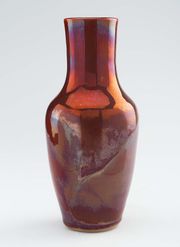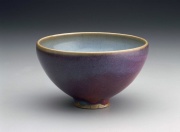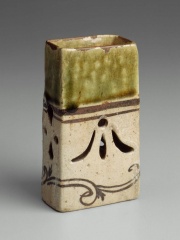Difference between revisions of "Copper oxide glaze"
Jump to navigation
Jump to search
| Line 1: | Line 1: | ||
| − | [[File:Oxbloodvase8740.jpg|thumb|Oxblood gaze vase MFA# 87.40]] | + | [[File:Oxbloodvase8740.jpg|thumb|Oxblood gaze vase<br>MFA# 87.40]] |
| − | [[File:58.394-SC19786.jpg|thumb|MFA# 58.394]] | + | [[File:58.394-SC19786.jpg|thumb|Chinese bowl<br>MFA# 58.394]] |
== Description == | == Description == | ||
| Line 10: | Line 10: | ||
[[File:92.5467-SC23761.jpg|thumb|]] | [[File:92.5467-SC23761.jpg|thumb|]] | ||
| − | == | + | ==Resources and Citations== |
| − | |||
| − | |||
| − | |||
| − | |||
* Henry Hodges, ''Artifacts: An Introduction to Early Materials and Technology'', Ronald P. Frye, Kingston, Canada, 1988 | * Henry Hodges, ''Artifacts: An Introduction to Early Materials and Technology'', Ronald P. Frye, Kingston, Canada, 1988 | ||
Revision as of 11:47, 31 August 2020
Description
Under oxidizing conditions, copper oxide will produce blue (with potassium oxide) or green (with lead oxide) glazes and under reducing conditions, copper oxide will produce red or or black glazes (Hodges 1988).
Synonyms and Related Terms
glaçure à l'oxyde cuivre (Fr.); vidrado de óxido de cobre (Port.)
Resources and Citations
- Henry Hodges, Artifacts: An Introduction to Early Materials and Technology, Ronald P. Frye, Kingston, Canada, 1988


